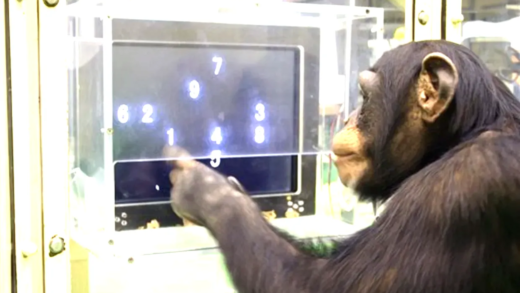Mixing colors to create brown involves various methods including combining primary and secondary colors, adjusting for light and dark variations, and utilizing different mediums like paint and dye. Understanding these techniques enhances creative possibilities for artists.
How to Make Brown: Primary Color Combinations
How to make brown? The answer lies in mixing primary colors. To create brown, you need to combine the three primary colors: red, yellow, and blue. The general rule is that mixing equal parts of these colors results in a rich brown. However, the specific shades can vary based on the proportions used. For instance, adding more red will give you a warmer brown, while increasing blue will yield a cooler tone.
To create different variations, consider the following combinations:
- Red + Yellow = Orange (Add blue to create brown)
- Yellow + Blue = Green (Add red to create brown)
- Red + Blue = Purple (Add yellow to create brown)
Experimenting with these combinations allows for a spectrum of browns, making it a versatile color for artists.
Mixing Secondary Colors for Brown
Knowing which secondary colors can be used to create brown is essential. Secondary colors are created by mixing two primary colors. The main secondary colors are orange, green, and purple. Each of these can contribute to creating a brown shade when mixed with a primary color.
Here’s how you can do it:
- Mix orange (red + yellow) with blue for a warm brown.
- Mix green (yellow + blue) with red for a muted brown.
- Mix purple (red + blue) with yellow for a unique brown tone.
Each combination will yield different results, allowing you to explore a range of browns. It’s interesting to note how adjusting the amounts of each color can dramatically change the final shade.
Two Colors to Make Brown: Simplifying the Process
Can brown be made with just two colors? Yes, it can! The simplest method involves mixing complementary colors—colors opposite each other on the color wheel. For example, mixing orange and blue will create a shade of brown. Similarly, mixing red and green or yellow and purple will also result in brown.
Here’s a quick guide on two-color combinations:
- Orange + Blue = Brown
- Red + Green = Brown
- Yellow + Purple = Brown
These pairs simplify the process, making it easier for artists to achieve brown without worrying about all three primary colors.
Mixing Complementary Colors for Brown
Learning how complementary colors can help achieve brown is a vital skill. Complementary colors, as mentioned earlier, are pairs that create a neutral tone when mixed. This can be particularly useful in art and design.
Here’s how it works:
- Complementary pairs include:
- Red and Green
- Blue and Orange
- Yellow and Purple
Mixing these pairs will yield a variety of browns. The key is to balance the proportions. A little more of one color can lead to warmer or cooler shades, depending on your needs.
Adjusting Brown Shades: Tips and Tricks
How to adjust brown shades? This process is all about fine-tuning your mix. Start with your base brown, then consider adding one of the following:
- White: Adding white will lighten the brown, creating a softer, pastel shade.
- Black: Incorporating black darkens the brown, resulting in a rich, deep tone.
- Yellow: A touch of yellow can warm up the brown, making it more vibrant.
- Blue: Adding blue cools down the brown, giving it a more subdued appearance.
Experiment with small amounts to see how each addition transforms your brown. Remember, mixing is like cooking—start small and build up. Too much of any color can overpower your base, so proceed cautiously!
Warm vs. Cool Brown Combinations
Warm and cool browns can drastically change the feel of your artwork. Warm browns, often derived from red or yellow, evoke a cozy, inviting atmosphere. To create warm browns, mix:
- Red + Yellow: Produces a vibrant, earthy tone.
- Orange + Blue: Yields a warm, rich brown.
In contrast, cool browns tend to have more blue or green undertones, offering a more subdued and calming effect. To achieve cool browns, try:
- Blue + Orange: Results in a cooler brown.
- Green + Red: Produces a muted, cool tone.
Understanding the warmth or coolness of your brown can help convey the right mood in your project. It’s all about balance!
Unique Tricks for Mixing Brown
Mixing brown can sometimes feel daunting, but here are some unique tricks to simplify the process:
- Color Wheel: Keep a color wheel handy. It helps visualize complementary colors and their mixtures.
- Remember the Recipe: A simple rule to remember: Red + Green, Blue + Orange, Yellow + Purple all create brown.
- Use a Palette Knife: This tool helps mix colors thoroughly, ensuring a smooth brown.
- Label Your Mixes: As you experiment, label your mixtures for future reference. It saves time and confusion!
These tips make mixing brown less intimidating. With practice, you’ll find your unique method and favorite shades!
Light and Dark Variations of Brown
How to make brown can extend beyond just mixing colors; understanding light and dark variations of brown is crucial. The appearance of brown changes significantly depending on its lightness or darkness. Lighter browns often evoke a sense of warmth and softness, making them ideal for creating a friendly or inviting atmosphere. In contrast, darker browns can convey a more serious or sophisticated vibe, suitable for formal settings.
Here are some ways to explore light and dark variations:
- Adding White: Incorporating white into your brown mix results in lighter shades like beige or taupe.
- Adding Black: Mixing black creates deeper shades like chocolate brown or espresso, giving a rich, luxurious feel.
- Adjusting Proportions: Tweaking the proportions of your initial colors can lead to a wide range of browns, from light to dark.
Understanding these variations allows artists to manipulate the mood and aesthetic of their work effectively. Remember, the key is to experiment and find what resonates best with your artistic vision.
Creating Brown with Different Mediums
Creating brown isn’t limited to just mixing paint. Different mediums can yield unique results. Understanding how to make brown with paint, dye, or other materials can expand your creative options significantly.
Here are some methods for creating brown using various mediums:
- Paint: The traditional method involves mixing primary colors or complementary colors as discussed earlier. Experiment with acrylics, oils, or watercolors to see how texture affects the final shade.
- Dyes: When working with fabrics, mixing dyes can create beautiful brown shades. For instance, combining red and green dye can yield a rich brown, depending on the fabric’s original color.
- Natural Materials: Using natural sources like coffee, tea, or spices can also produce brown hues. These materials offer unique textures and shades that synthetic colors may not replicate.
By exploring different mediums, you can discover new ways to create and utilize brown in your projects, adding depth and character to your work.





Comments are closed.